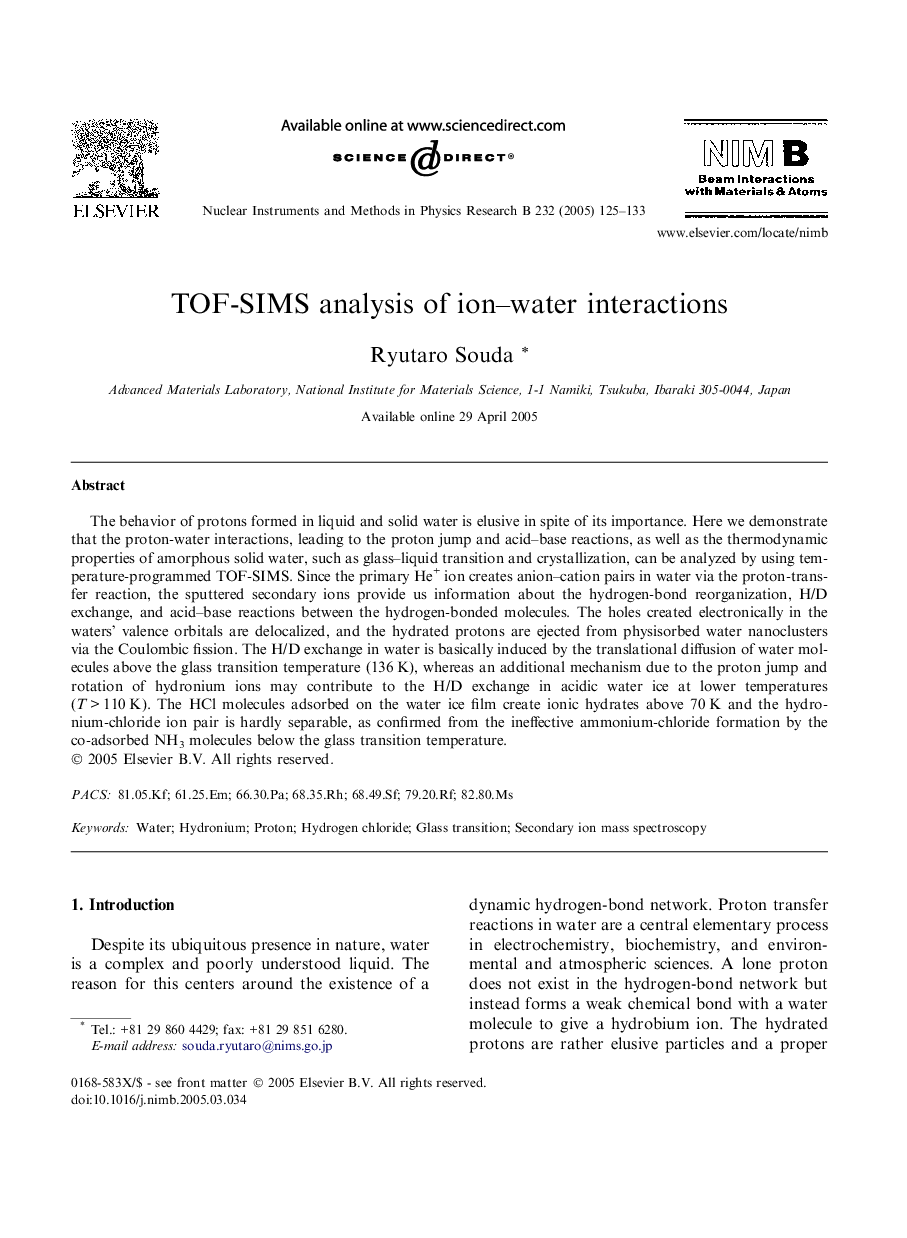| Article ID | Journal | Published Year | Pages | File Type |
|---|---|---|---|---|
| 9818100 | Nuclear Instruments and Methods in Physics Research Section B: Beam Interactions with Materials and Atoms | 2005 | 9 Pages |
Abstract
The behavior of protons formed in liquid and solid water is elusive in spite of its importance. Here we demonstrate that the proton-water interactions, leading to the proton jump and acid-base reactions, as well as the thermodynamic properties of amorphous solid water, such as glass-liquid transition and crystallization, can be analyzed by using temperature-programmed TOF-SIMS. Since the primary He+ ion creates anion-cation pairs in water via the proton-transfer reaction, the sputtered secondary ions provide us information about the hydrogen-bond reorganization, H/D exchange, and acid-base reactions between the hydrogen-bonded molecules. The holes created electronically in the waters' valence orbitals are delocalized, and the hydrated protons are ejected from physisorbed water nanoclusters via the Coulombic fission. The H/D exchange in water is basically induced by the translational diffusion of water molecules above the glass transition temperature (136Â K), whereas an additional mechanism due to the proton jump and rotation of hydronium ions may contribute to the H/D exchange in acidic water ice at lower temperatures (TÂ >Â 110Â K). The HCl molecules adsorbed on the water ice film create ionic hydrates above 70Â K and the hydronium-chloride ion pair is hardly separable, as confirmed from the ineffective ammonium-chloride formation by the co-adsorbed NH3 molecules below the glass transition temperature.
Keywords
Related Topics
Physical Sciences and Engineering
Materials Science
Surfaces, Coatings and Films
Authors
Ryutaro Souda,
